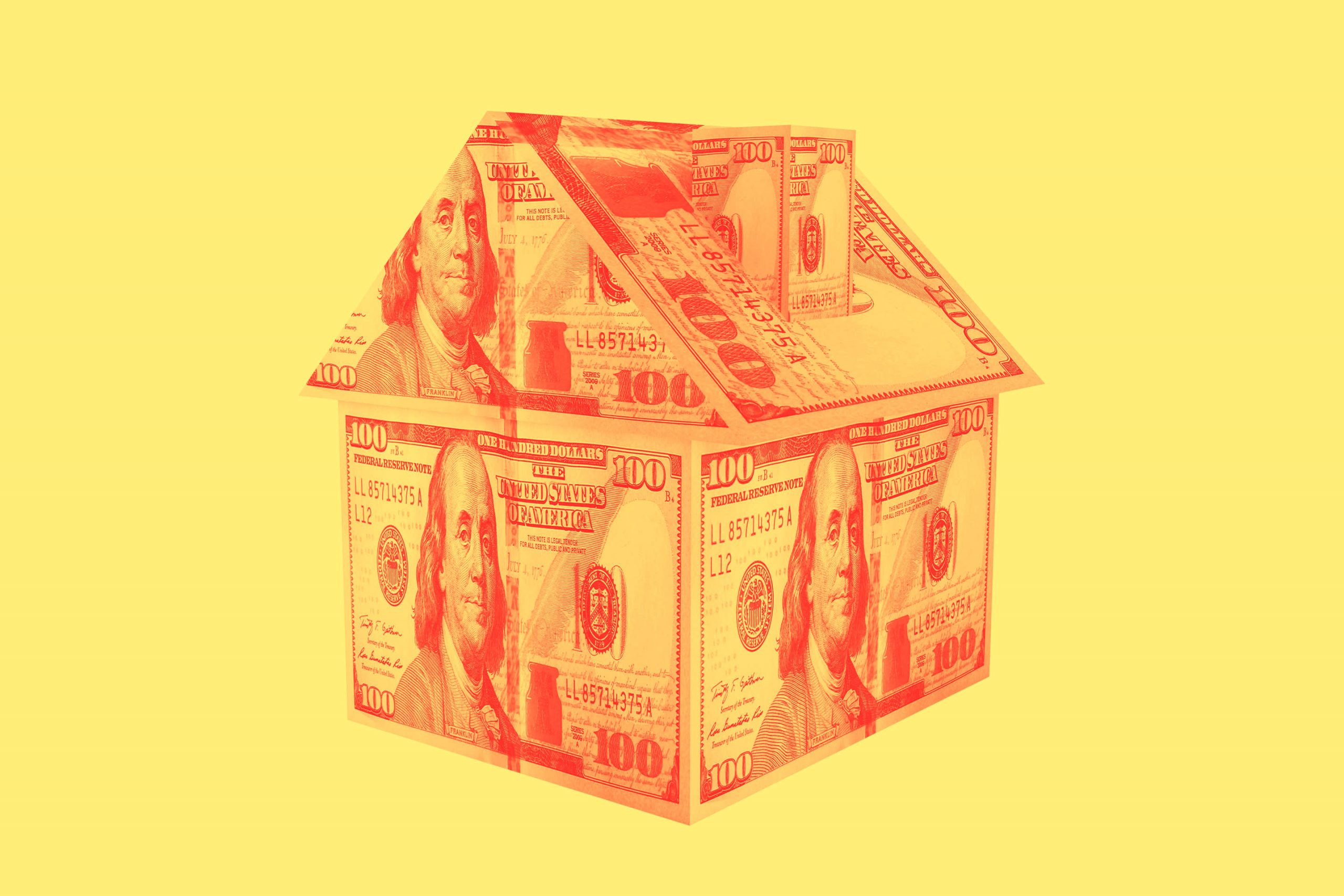Uncategorized
The Fed’s housing market ‘reset’ has us in a housing correction. Here’s what to expect next

Through the first 24 months of the pandemic, U.S. home prices soared 38.5%. In some markets, like Phoenix and Dallas, home prices grew by more than 50%.
The Federal Reserve wasn’t a fan. As the pandemic housing boom raged along, it pushed up prices across the economy. Higher home prices pushed up rents. Elevated homebuilding levels—which hit a 15-year high during the pandemic—put upward price pressure on everything from windows to lumber while also adding stress to an already stressed global supply chain. Not to mention, cash flowed into the economy from homeowners who tapped into that record home equity.
That’s why the central bank, who has a mandate from Congress to tackle runaway inflation, has targeted the U.S. housing market. How? It put immense upward pressure on mortgage rates. While the Fed doesn’t directly set mortgage rates, it has the levers to see that financial markets do so. Once the Fed made it clear this year what lay ahead for monetary tightening, markets quickly pushed the average 30-year fixed mortgage rate above 5%.
In June, Fed Chair Jerome Powell finally made it clear this is all by design. Powell would like to see the U.S. housing market return to a more balanced state. In his own words, he calls it a “reset.”
“I’d say if you are a homebuyer, somebody or a young person looking to buy a home, you need a bit of a reset. We need to get back to a place where supply and demand are back together and where inflation is down low again, and mortgage rates are low again,” Powell told reporters last month. “We saw [home] prices moving up very, very strongly for the last couple of years. So that changes now. And rates have moved up. We are well aware that mortgage rates have moved up a lot. And you are seeing a changing housing market. We are watching it to see what will happen. How much will it really affect residential investment? Not really sure. How much will it affect housing prices? Not really sure.”
Already, spiking mortgage rates have pushed the U.S. housing market into cool-down mode. As April and May housing data trickled in, it became clear the pandemic housing boom was fizzling out. In June and July, the pace of the cooling picked up.
To find evidence of the accelerated rate of cooling, just look at inventory data. Among the nation’s 100 largest housing markets, the median market saw inventory rise 1% between January and April, according to Fortune‘s analysis of realtor.com data. That was before spiking mortgage rates kicked off the housing correction. Among those same 100 largest housing markets, the median market saw inventory rise 50% between April and June.
View this interactive chart on Fortune.com
Across the country, the U.S. housing market is slowing. Mortgage applications are down 17% on a year-over-year basis, according to the Mortgage Bankers Association. New home sales and existing home sales are falling sharply. Homebuilding has slowed. And more home sellers are slashing their list price.
That said, this housing correction—or as Fortune calls it, the Great Deceleration—is hardly uniform across the country. It has hit Southwest, Mountain West, and West Coast housing markets particularly hard. Among the 10 housing markets that have seen inventory levels rise the most this year, every single one is located in those regions. That group is led by Sherman, Tex. (+332% inventory); San Francisco (+285%); Santa Fe (+272%); Denver (+247%); and Austin (+220%).
The reason? Across the nation, the pandemic housing boom saw home prices become detached from underlying economic fundamentals. That detachment has been even more pronounced in markets across the Southwest, Mountain West, and West Coast. Now that mortgage rates are above 5%, buyers in those “overvalued” markets are feeling particularly squeezed. Some would-be buyers are choosing to remain on the sidelines. Others simply can’t afford a mortgage at a 5% rate.
Heading into the year, Logan Mohtashami, lead analyst at HousingWire, was already clamoring for higher mortgage rates. His thinking was that higher mortgage rates would be the only way to sideline buyers and allow inventory breathing room to climb to a healthier level. So far, Mohtashami likes what he’s seeing.
“We still have some work to do to get a balanced market. However, with higher rates, we have a shot to get back to peak inventory levels in 2019, which is a balanced market,” Mohtashami says. “All my inventory issues go away once we are back to 2019 levels, and only then can I remove the savagely unhealthy housing market theme.”
While inventory is rising quickly, it still remains far below pre-pandemic levels: Among the 917 regional housing markets measured by realtor.com, 601 markets are still at least 50% below their pre-pandemic level. Mohtashami wants to see that gap close.
View this interactive chart on Fortune.com
For months, Moody’s Analytics chief economist Mark Zandi has been calling this slowing a “housing correction.” He doesn’t see it stopping this year. Through the summer, he expects home sales to continue falling. By this time next year, Zandi expects year-over-year home price growth to slow to 0%. That’d be quite the deceleration considering that the latest reading sits at 20.4%.
But not every housing market will be so lucky. The pandemic housing boom saw markets like Phoenix, Boise, and Las Vegas become what Moody’s Analytics deems significantly “overvalued.” Now they’re at risk of a price correction. As inventory in those places continues marching upward, Zandi predicts those significantly “overvalued” markets will see home prices fall by 5% to 10%. But if a recession actually materializes, Moody’s Analytics predicts U.S. home prices would fall by 5% while significantly “overvalued” markets, like Charlotte and Tampa, would see home prices fall by 15% to 20%.
Want to stay updated on the housing correction? Follow me on Twitter at @NewsLambert.
This story was originally featured on Fortune.com
Uncategorized
BofA Securities maintains Amazon.com at ‘buy’ with a price target of $154.00
Uncategorized
Six people in critical condition, one still missing after Paris blast – prosecutor

5/5
© Reuters. French firefighters and rescue forces work after several buildings on fire following a gas explosion in the fifth arrondissement of Paris, France, June 21, 2023. REUTERS/Gonzalo Fuentes
2/5
PARIS (Reuters) – Six people remained in a critical condition and one person was believed still missing on Thursday, one day after a blast ripped through a street near Paris’ historic Latin Quarter, the city’s public prosecution office said. “These figures may still change,” prosecutor Maylis De Roeck told Reuters in a text message, adding that around 50 people had been injured in the blast, which set buildings ablaze and caused the front of one to collapse onto the street. Of two people initially believed missing, one has been found in hospital and is being taken care of, the prosecutor said, adding: “Searches are ongoing to find the second person.” Authorities have not yet said what caused the explosion, which witnesses said had followed a strong smell of gas at the site. The explosion led to scenes of chaos and destruction in the historic Rue Saint Jacques, which runs from the Notre-Dame de Paris Cathedral to the Sorbonne University, just as people were heading home from work. It also destroyed the facade of a building housing the Paris American Academy design school popular with foreign students. Florence Berthout, mayor of the Paris district where the blast occurred, said 12 students who should have been in the academy’s classrooms at the time had fortunately gone to visit an exhibition with their teacher.
“Otherwise the (death toll) could have been absolutely horrific,” Berthout told BFM TV. She said three children who had been passing by at the time were among the injured, although their lives were not in danger.
Uncategorized
4 big analyst cuts: Alcoa & DigitalOcean shares drop on downgrades

© Reuters.
Here is your Pro Recap of the biggest analyst cuts you may have missed since yesterday: downgrades at Alcoa, DigitalOcean, Teleflex, and Xcel Energy.InvestingPro subscribers got this news in rapid fire. Never be left in the dust again.Alcoa stock drops on Morgan Stanley downgrade Alcoa (NYSE:) shares fell more than 3% pre-market today after Morgan Stanley downgraded the company to Underweight from Equalweight and cut its price target to $33.00 from $43.00, as reported in real time on InvestingPro.The firm sees a significant decline in consensus estimates, and as negative earnings revisions materialize, it believes the stock will face downward pressure and underperform.The analyst’s estimates for EBITDA in Q2, 2023, and 2024 are substantially lower than the consensus. The stock is currently trading above its historical average. The firm said its downward revisions in earnings estimates and price target are attributed to the company’s high operating leverage to aluminum prices.DigitalOcean stock plunges on downgradePiper Sandler downgraded DigitalOcean (NYSE:) to Underweight from Neutral with a price target of $35.00. As a result, shares plunged more than 5% pre-market today.The company reported its last month, with revenue beating the consensus estimate, while EPS coming in worse than expected. Furthermore, the company provided a strong outlook, which was above the Street estimates.2 more downgradesTeleflex (NYSE:) shares fell more than 3% yesterday after Needham downgraded the company to Hold from Buy, noting that UroLift expectations may still be too high.According to Needham, their checks indicate that urologists are reducing their use of UroLift due to its retreatment rates, reimbursement cuts, and increasing use of competing procedures. This is also supported by their Google Trends data analysis, which indicates decreasing search interest in UroLift.BMO Capital downgraded Xcel Energy (NASDAQ:) to Market Perform from Outperform and cut its price target to $64.00 from $69.00 to reflect the lower-than-expected terms of the company’s regulatory settlement in Colorado.Amid whipsaw markets and a slew of critical headlines, seize on the right timing to protect your profits: Always be the first to know with InvestingPro.Start your free 7-day trial now.

 Forex2 years ago
Forex2 years agoForex Today: the dollar is gaining strength amid gloomy sentiment at the start of the Fed’s week

 Forex2 years ago
Forex2 years agoHow is the Australian dollar doing today?

 Forex2 years ago
Forex2 years agoUnbiased review of Pocket Option broker

 Forex2 years ago
Forex2 years agoDollar to pound sterling exchange rate today: Pound plummeted to its lowest since 1985

 Cryptocurrency2 years ago
Cryptocurrency2 years agoWhat happened in the crypto market – current events today

 World2 years ago
World2 years agoWhy are modern video games an art form?

 Stock Markets2 years ago
Stock Markets2 years agoMorgan Stanley: bear market rally to continue

 Economy2 years ago
Economy2 years agoCrude oil tankers double in price due to EU anti-Russian sanctions
































